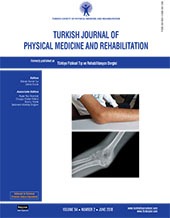Diagnosing fibromyalgia in rheumatoid arthritis: The importance of assessing disease activity
Patients and methods: The study included 151 RA patients (32 males, 119 females; mean age 52.4±12.7 years; range 21 to 82 years) and 77 controls (13 males, 64 females; mean age 53.7±10.2 years; range 33 to 73 years). Individuals were classified into four groups based on presence of RA and FMS. Group 1 included patients with both RA and FMS (n=53), group 2 included patients with RA and without FMS (n=98), group 3 included controls with FMS (n=15), and group 4 included controls without FMS (n=62). Demographic characteristics, morning stiffness (MS), pain, Disease Activity Score 28 (DAS28), functional and QoL scores were compared among the groups.
Results: No significant differences were found between the four groups as regards the mean age and gender distribution (p>0.05). Higher pain, MS, DAS28, and QoL scores in the groups with FMS drew attention. While FMS was found in 8.1% of RA patients with remission, it was found in 53.9% of patients with active RA, and in 19.5% of controls.
Conclusion: Although FMS incidence in patients with RA was higher compared to controls without inflammatory disease, FMS evaluated with 2010 ACR diagnostic criteria was found to be common in the general population. DAS28 and inflammatory markers were higher in RA patients with FMS; thus, it has been concluded that sleep disorder and widespread pain caused by active disease may facilitate the diagnosis of FMS.
Keywords : Disease Activity Score; fibromyalgia; rheumatoid arthritis

















